Input interpretation

Xe-113 (xenon-113) | Sn-103 (tin-103)
Decay properties

| Xe-113 | Sn-103 half-life | 2.74 s (2.657 to 2.823 s) | 7 s (3.5 to 10.2 s) mean lifetime | 3.95 s (3.835 to 4.071 s) | 10 s (5.65 to 14.5 s) decay constant | 0.253 per second | 0.1 per second specific activity | 1.35×10^9 TBq/g | 5.9×10^8 TBq/g width | 1.67×10^-16 eV | 6.5×10^-17 eV decay modes | β^+ (positron emission) | β^+p (positron + delayed proton) | α (alpha emission) | β^+α (positron + delayed α) | β^+ (positron emission) | β^+p (positron + delayed proton) final decay products | In-113 (90%) | Sn-112 (7%) | Ag-109 (0.007%) | Cd-108 (0.001%) | Pd-105 (4×10^-4%) | Cd-112 (0%) | Pd-104 (0%) | Pd-108 (0%) | Rh-103 (100%) | Pd-102 (0%) | Ru-102 (0%)
Decay modes
Xe-113
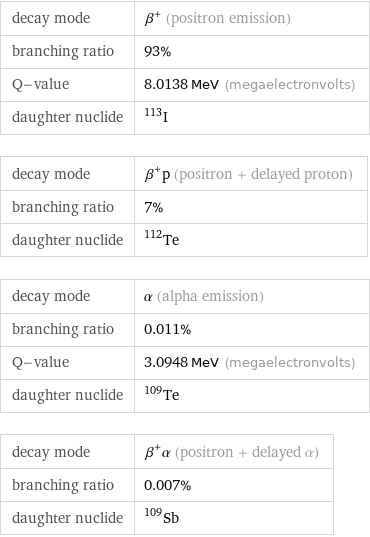
decay mode | β^+ (positron emission) branching ratio | 93% Q-value | 8.0138 MeV (megaelectronvolts) daughter nuclide | I-113 decay mode | β^+p (positron + delayed proton) branching ratio | 7% daughter nuclide | Te-112 decay mode | α (alpha emission) branching ratio | 0.011% Q-value | 3.0948 MeV (megaelectronvolts) daughter nuclide | Te-109 decay mode | β^+α (positron + delayed α) branching ratio | 0.007% daughter nuclide | Sb-109
Sn-103
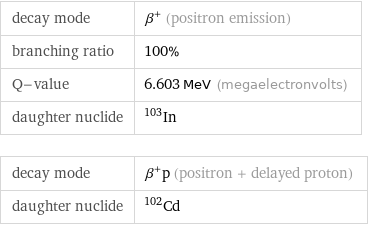
decay mode | β^+ (positron emission) branching ratio | 100% Q-value | 6.603 MeV (megaelectronvolts) daughter nuclide | In-103 decay mode | β^+p (positron + delayed proton) daughter nuclide | Cd-102
Radiation shielding

Radiation shielding
Decay chain
Xe-113
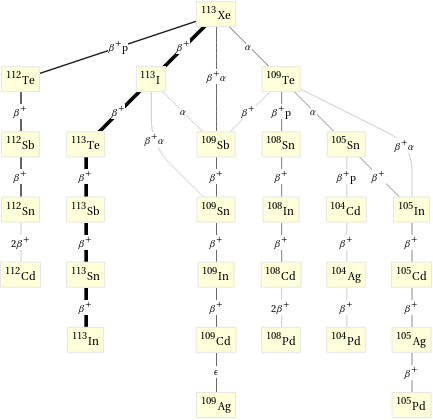
Decay chain Xe-113
Sn-103

Decay chain Sn-103
Mass properties
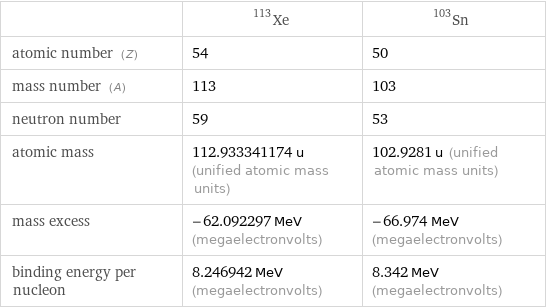
| Xe-113 | Sn-103 atomic number (Z) | 54 | 50 mass number (A) | 113 | 103 neutron number | 59 | 53 atomic mass | 112.933341174 u (unified atomic mass units) | 102.9281 u (unified atomic mass units) mass excess | -62.092297 MeV (megaelectronvolts) | -66.974 MeV (megaelectronvolts) binding energy per nucleon | 8.246942 MeV (megaelectronvolts) | 8.342 MeV (megaelectronvolts)
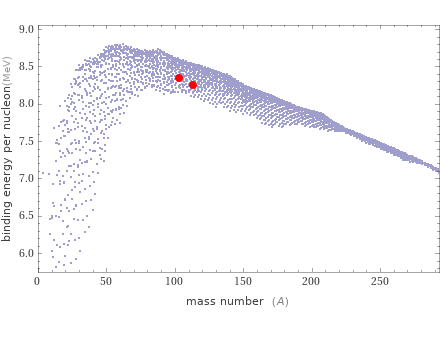
Mass properties
Nearby isotopes
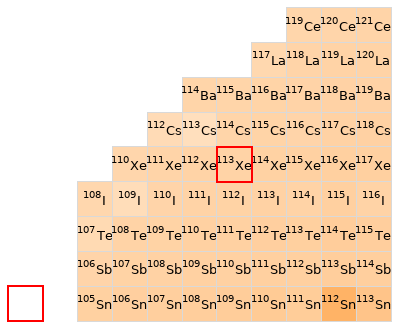
Nearby isotopes
Quantum properties

| Xe-113 | Sn-103 spin parity J^π | 5/2^+ (atomic fermion) | 5/2^+ (atomic fermion)
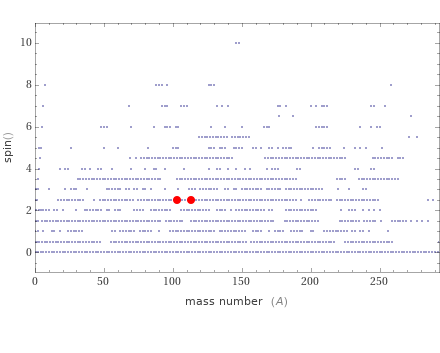
Quantum properties